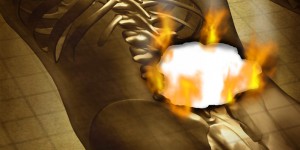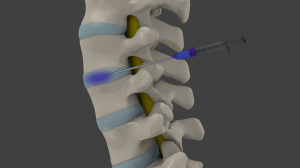What Is A Discogram?
A Discogram also known as diskogram is a back pain diagnostic test. The test is used by the doctor to help determine if your back pain is as a result of a disc abnormality. Though  the discogram does not treat the abnormal or damaged disc, it helps to determine the right course of treatment to use.
the discogram does not treat the abnormal or damaged disc, it helps to determine the right course of treatment to use.
How Is A Discogram Carried Out?
The procedure is done using x-ray dye to identify if your spinal discs have any cracks that may be causing the pain. Several discs are injected and any crack, tears or any other form of damage on the disc will appear on the CT scan or x-ray. The procedure used is known as fluoroscopy and intravenous antibiotics are given to the patient before the procedure.
Monitoring using an EKG monitor is conducted through the process and your blood pressure will also be monitored with a blood pressure cuff. An oxygen monitoring device is also used. The skin injection site is sterilized then numbed with the anesthesia before carrying out the discogram. An x-ray contrast dye is used with other medication and these are applied in varying pressure amounts. 
You need to be conscious during the procedure because the workers compensation pain management doctor will ask you a few questions regarding the symptoms. After the discogram is completed, the needles used will be removed and band aids applied.
How Many Needles Are Used In A Discogram?
The number of needles used will vary and depend on your symptoms, the MRI and test results. The discs that seem to cause pain will be injected and usually a few disks are injected in a single visit.
What Is In The Injection?
The discogram consists of an x-ray contrast also known as x-ray dye. This could also be mixed with antibiotics to avert infections and sometimes steroids and anesthesia may be used.
Is It Painful?
The process is not painful, but you will feel some pressure as the disc is injected. If an abnormal disc is injected, then you will feel pain and you need to let your Arizona Workers Compensation doctor know if the pain is different from your usual pain.
Will The Discogram Reduce Pain?
No it will not. It’s important that you understand that a discogram is a diagnostic test and only pin-points the source of the pain. However, it can help relieve your pain because it will help your work comp pain doctor to identify the right course of treatment.
What Are The Risks?
The procedure is uncomplicated and safe. However, it does come with its own set of side effects and risks. Some of these include: infection, headache, nausea, allergic reactions to the x-ray dye, injury of nerves or the blood vessels around the spine and could also increase your chronic pain.
How Can I Prepare For My Discogram?
Usually the federal workers compensation doctor will give you a list of dos and dont’s. These will include the medications you can take and cannot take as well as when to eat or drink. It’s very important that you stop taking your blood thinning medication when your  doctors advices you to stop.
doctors advices you to stop.
What Happens After The Discogram?
After the procedure you will be kept under observation for about an hour, and as is the case with all back injections, you need to have organized transportation from the hospital. It’s not recommended that you immediately go back to work, and if you can, take two to three days off. The injection site may be a little sore and you can apply some ice on the sore site.
Is The Procedure Safe For All?
No. There are certain conditions that could hinder you from undergoing the procedure. These include infection in the injection area, allergies to administered medication, poorly controlled heart disease or diabetes and others. Intake of blood thinning medication could also hinder you from taking this medication.






Leave A Comment